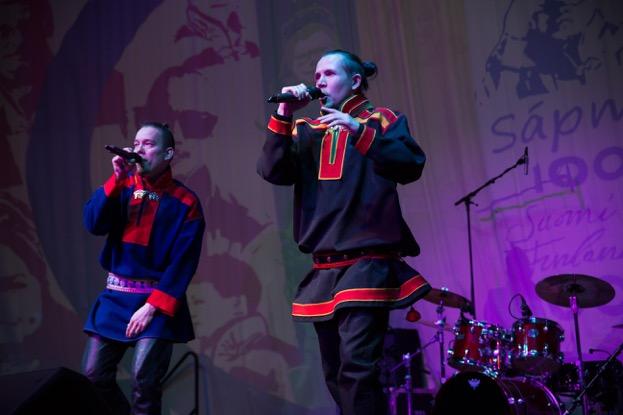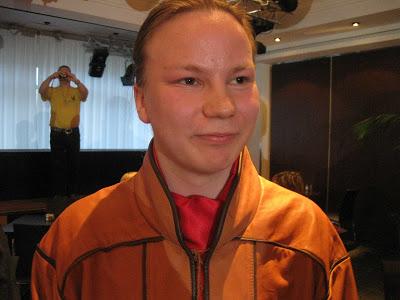Music
Joik (yoik) is the best-known form of traditional Saami music. The joiker seeks to capture the subject of their song in their joik: They do not sing “about the fjeld”. Instead, they “sing the fjeld”. They draw their themes from their personal sphere of life. The local fjelds (arctic mountains and hills with a treeless peak), rivers and lakes are the most popular themes inspired by nature. Reindeer are the most important animals for the joiker, and fishers obviously joik the salmon. Various items and machines have also been joiked. The most common theme, however, is people, from loved ones to enemies. The person is depicted from a specific perspective: admiration, mockery, pity, fear. The unique joik sound is created by strongly tensing the vocal cords.
A particular element of the rich music culture of the Skolt Saami includes is the leudd storytelling tradition. Leudds are individual, personal symbolic songs. A leudd is always someone’s own, someone’s personal leudd.
According to Skolt Saami–Finnish singer Tiina Sanila, a good leudd always has three important elements: a good melody, lyrics with a compelling story, and euphemisms to disguise difficult issues. Each performance is always different, personal and strongly attached to issues of which the community already has knowledge and awareness. We can even talk about a specific “language of leudds”, with features such as adding extra syllables to words. The closest comparison could be the Karelian laments.
Tiina Sanila: Uuh. Tuupa Records 2007.
In addition to traditional music, features from Saami culture and Saami languages are strongly alive in modern music, too. In the 1990s, Saami music was made known by Angelin tytöt (Aŋŋel nieiddat), a group with a strong vocal line. Today, rap music is popular among Saami (in Finland), performed by artists such as North Saami Áilu Valle and Aanaar (Inari) Saami Amoc (Mikkâl Antti Morottaja).

